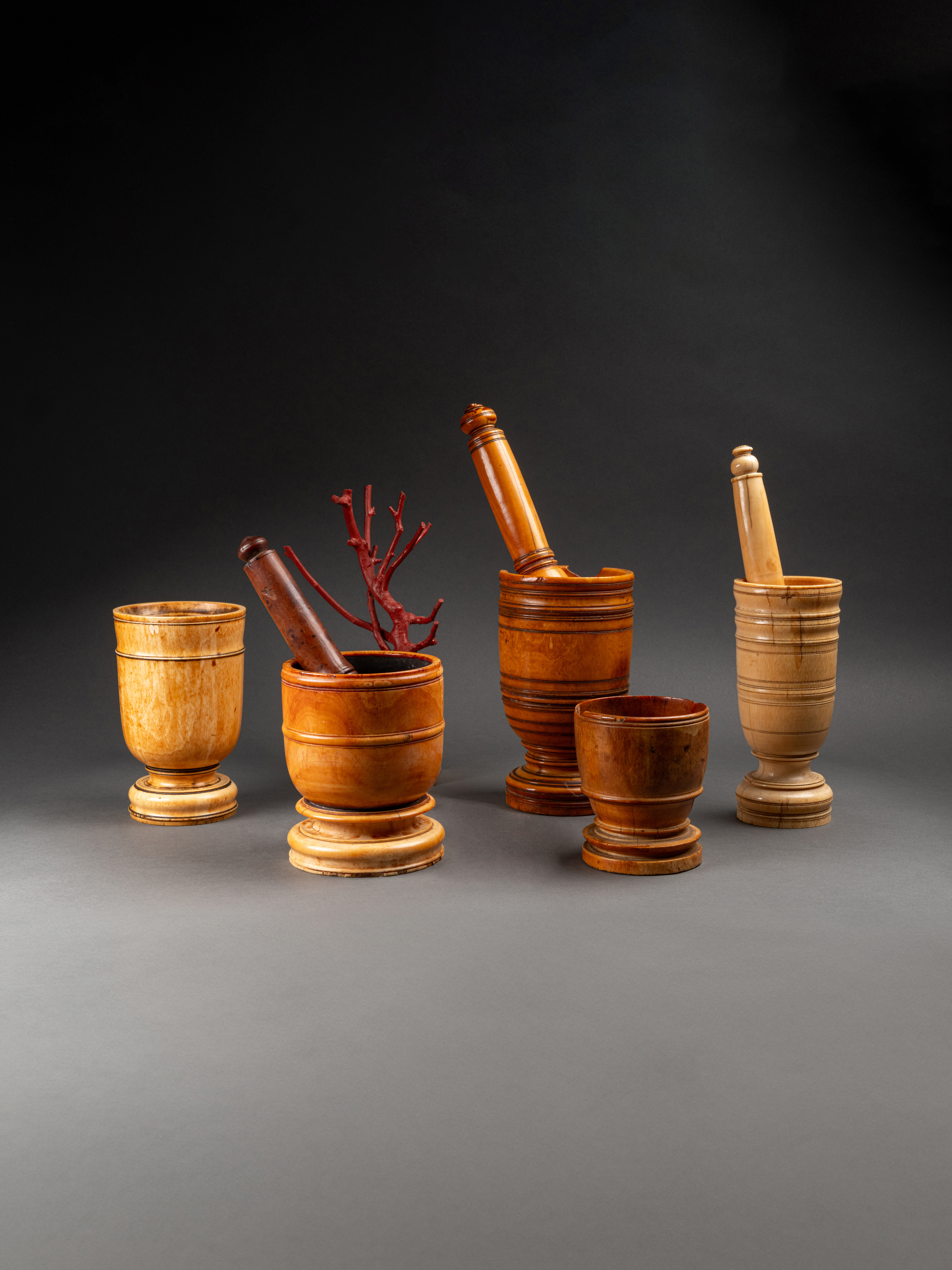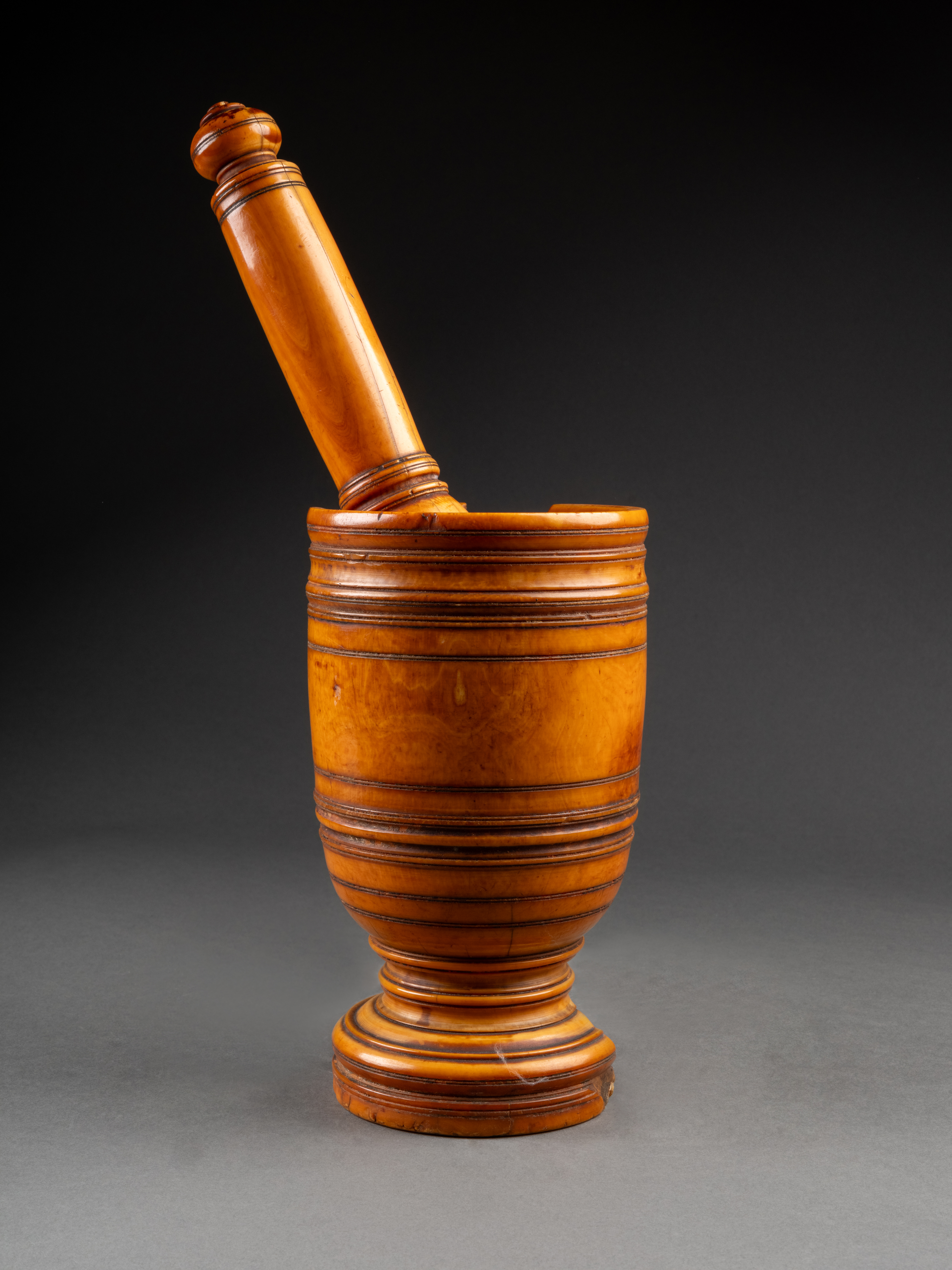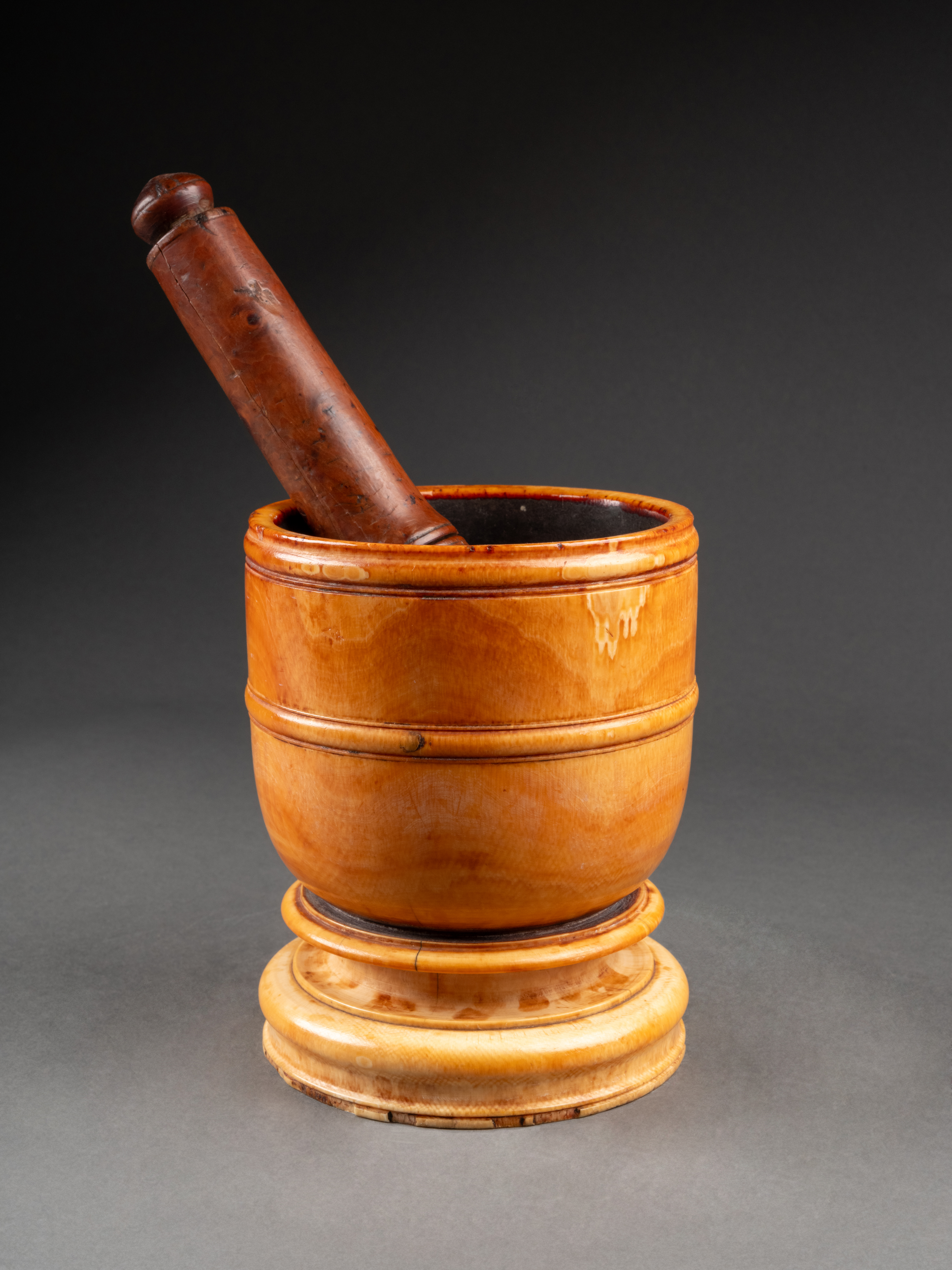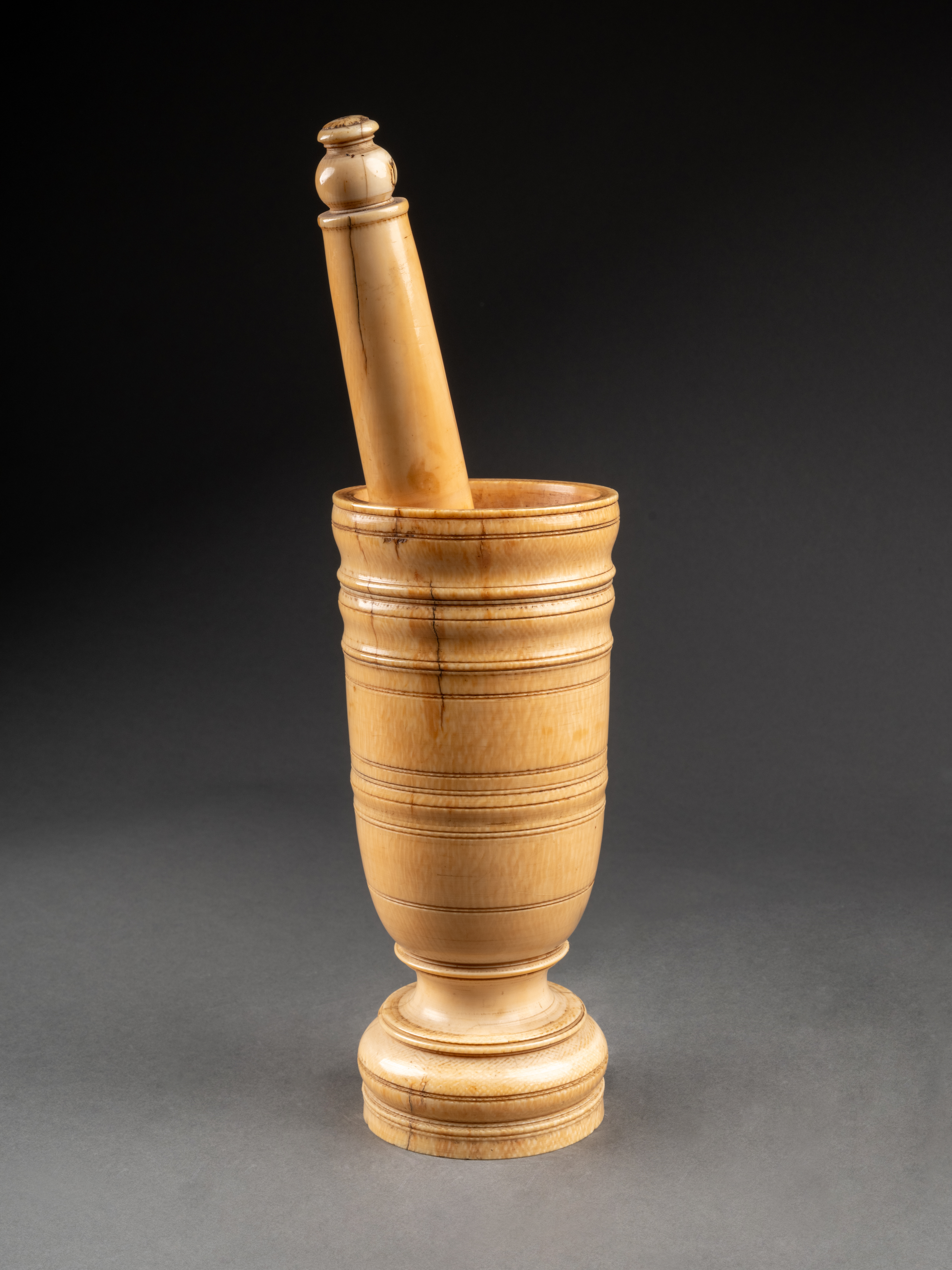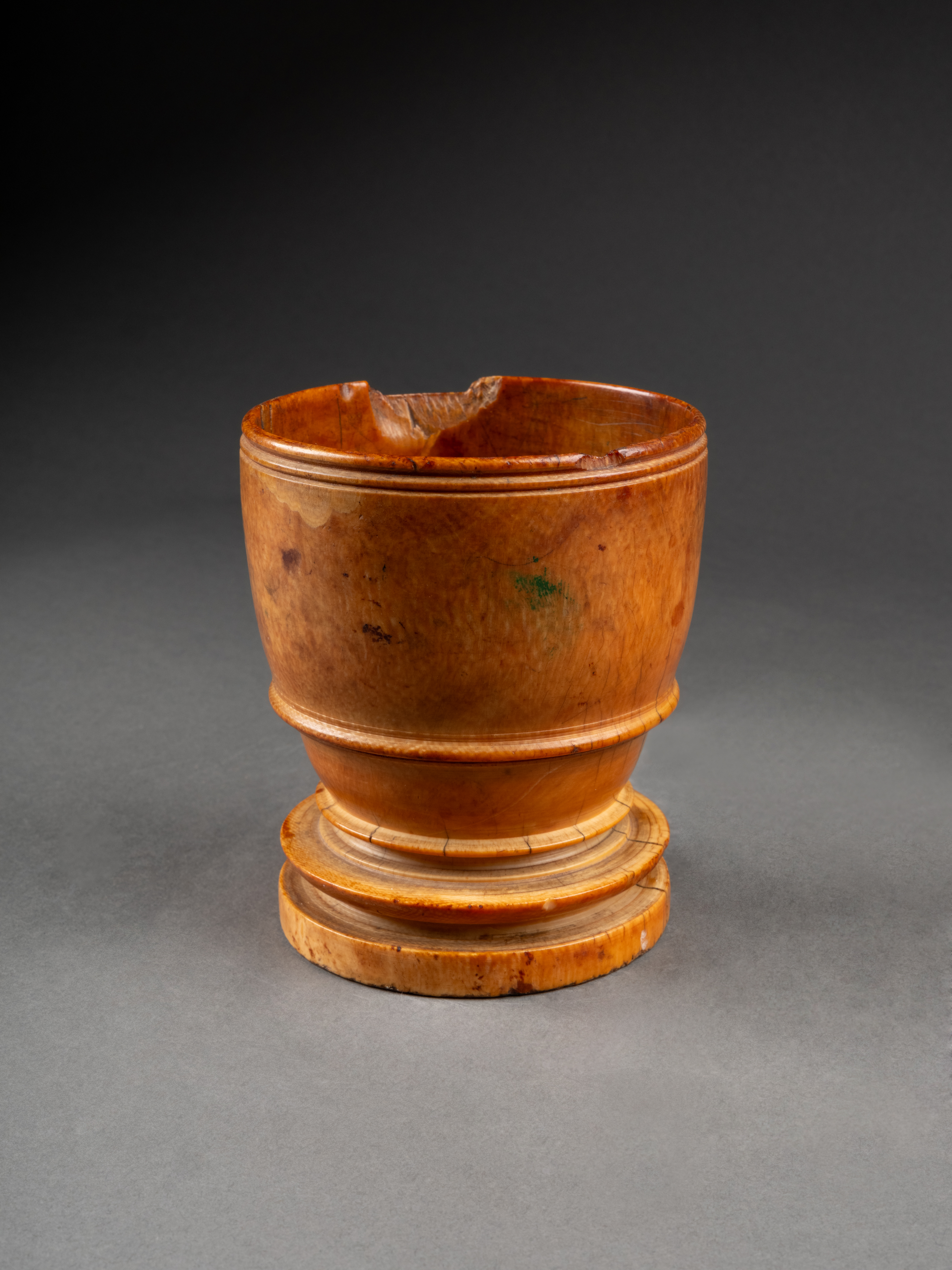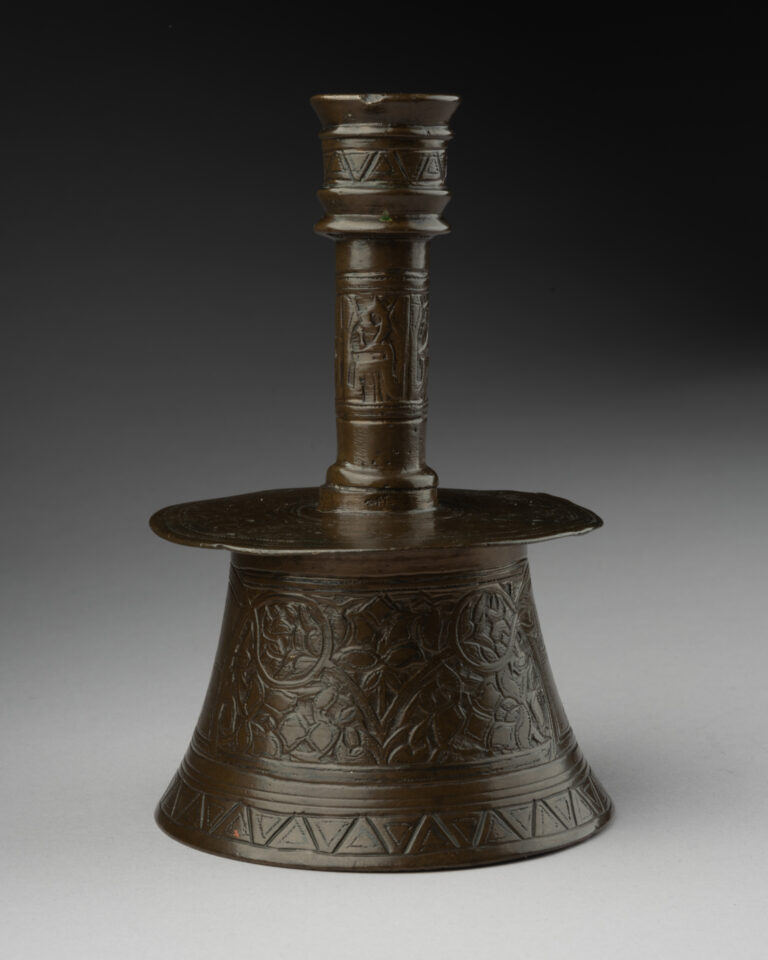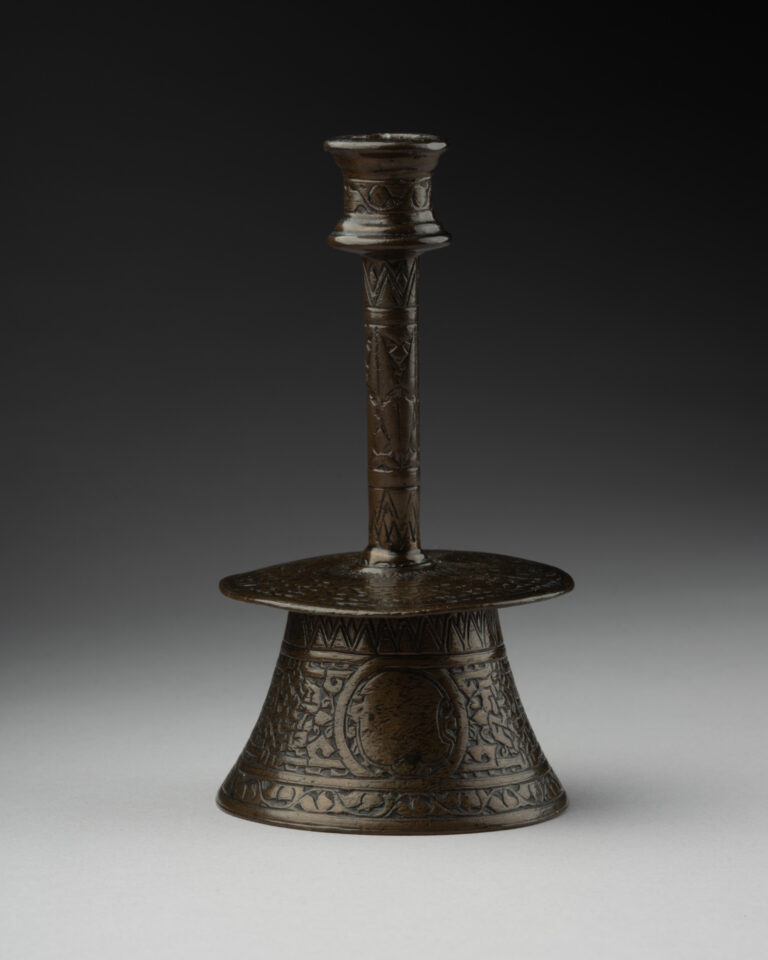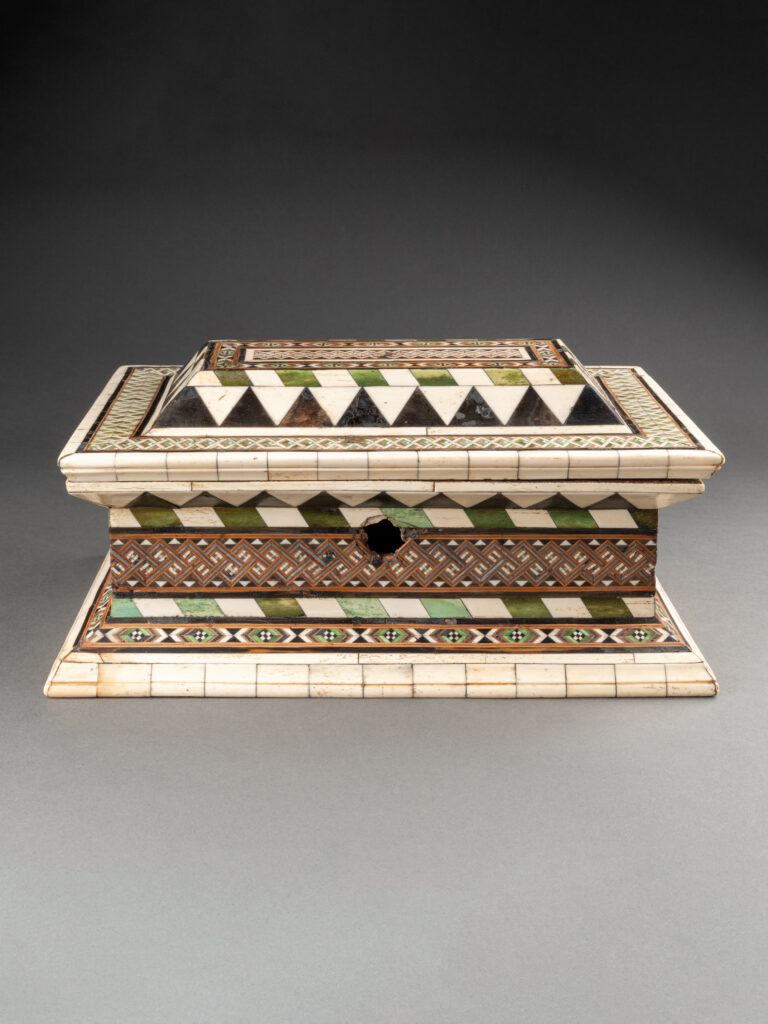The appearance of the mortar dates back to the most remote antiquity. While exploring museums across several countries in Europe and Asia, one encounters mortars made of stone, iron, wood, glass, and ivory.
With the Portuguese conquest in 1510, the region of Goa became an important commercial hub, a central communication point between the South and North of India, also connected to Persia via Ormuz, and to China and vast Southeast Asia via Malacca. From the mid-sixteenth century, Goa gained control over the main commercial routes of luxury Asian goods; between the end of the century and the beginning of the next, this territory emerged as a significant artistic center. Unlike the Spanish colonial empire, Portugal encouraged mixed marriages, particularly in Goa. The city thus became the home to a specific art: Indo-Portuguese art.
The Portuguese initially capitalized on the talent of local artisans, but soon traders and artisans from different cultures, from Europe to the Far East, settled in the region.
Beyond the immense variety of Indo-Portuguese religious imagery in Goa, numerous objects and utensils, including mortars, were crafted from this precious material. This elephant ivory comes from southern Africa, specifically from other Portuguese colonies on this continent (Mozambique) and the Zanzibar archipelago. On the one hand, African tusks are larger, but on the other hand, the elephant is a sacred animal in India.
The Indo-Portuguese ivory mortar is an object of great artistic and historical significance, reflecting the cultural exchanges between India and Portugal during a crucial period in history.
In conclusion, the Indo-Portuguese ivory mortar stands as a unique and fascinating object, a testament to a bygone era where Indian and Portuguese cultures intersected and mutually influenced each other.
